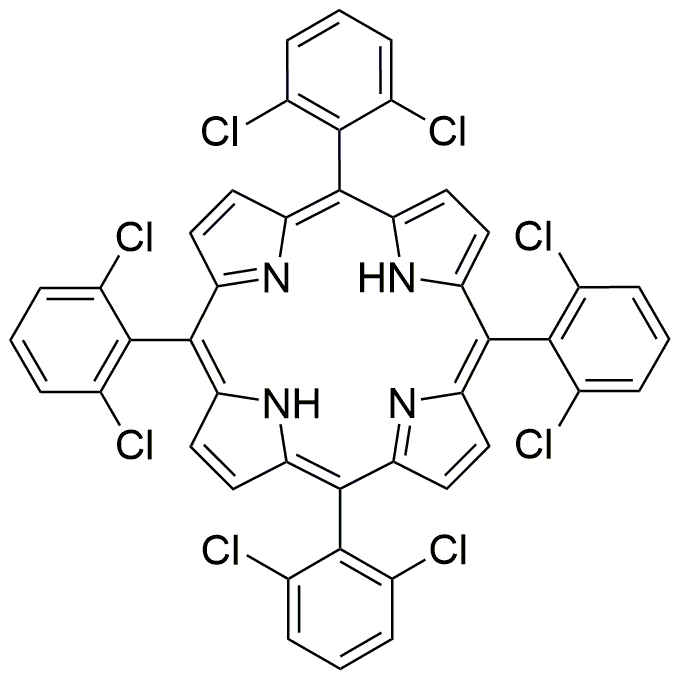5,10,15,20-Tetrakis(2,6-dichlorophenyl)porphyrin is widely utilized in research focused on:
- Photodynamic Therapy: This compound is effective in medical treatments for cancer, where it serves as a photosensitizer, helping to target and destroy cancer cells when exposed to specific light wavelengths.
- Solar Energy Conversion: It is used in the development of organic solar cells, enhancing light absorption and energy conversion efficiency, making renewable energy technologies more viable.
- Fluorescent Probes: The compound acts as a fluorescent marker in biological imaging, allowing researchers to visualize cellular processes and structures with high precision.
- Catalysis: It plays a role in catalyzing chemical reactions in organic synthesis, offering a pathway for more efficient and environmentally friendly manufacturing processes.
- Material Science: This porphyrin derivative is used in creating advanced materials, such as sensors and electronic devices, due to its unique electronic properties and stability.
General Information
Properties
Safety and Regulations
Applications
5,10,15,20-Tetrakis(2,6-dichlorophenyl)porphyrin is widely utilized in research focused on:
- Photodynamic Therapy: This compound is effective in medical treatments for cancer, where it serves as a photosensitizer, helping to target and destroy cancer cells when exposed to specific light wavelengths.
- Solar Energy Conversion: It is used in the development of organic solar cells, enhancing light absorption and energy conversion efficiency, making renewable energy technologies more viable.
- Fluorescent Probes: The compound acts as a fluorescent marker in biological imaging, allowing researchers to visualize cellular processes and structures with high precision.
- Catalysis: It plays a role in catalyzing chemical reactions in organic synthesis, offering a pathway for more efficient and environmentally friendly manufacturing processes.
- Material Science: This porphyrin derivative is used in creating advanced materials, such as sensors and electronic devices, due to its unique electronic properties and stability.
Documents
Safety Data Sheets (SDS)
The SDS provides comprehensive safety information on handling, storage, and disposal of the product.
Product Specification (PS)
The PS provides a comprehensive breakdown of the product’s properties, including chemical composition, physical state, purity, and storage requirements. It also details acceptable quality ranges and the product's intended applications.
Certificates of Analysis (COA)
Search for Certificates of Analysis (COA) by entering the products Lot Number. Lot and Batch Numbers can be found on a product’s label following the words ‘Lot’ or ‘Batch’.
Numéro de catalogue
Numéro de lot/série
Certificates Of Origin (COO)
This COO confirms the country where the product was manufactured, and also details the materials and components used in it and whether it is derived from natural, synthetic, or other specific sources. This certificate may be required for customs, trade, and regulatory compliance.
Numéro de catalogue
Numéro de lot/série
Safety Data Sheets (SDS)
The SDS provides comprehensive safety information on handling, storage, and disposal of the product.
DownloadProduct Specification (PS)
The PS provides a comprehensive breakdown of the product’s properties, including chemical composition, physical state, purity, and storage requirements. It also details acceptable quality ranges and the product's intended applications.
DownloadCertificates of Analysis (COA)
Search for Certificates of Analysis (COA) by entering the products Lot Number. Lot and Batch Numbers can be found on a product’s label following the words ‘Lot’ or ‘Batch’.
Numéro de catalogue
Numéro de lot/série
Certificates Of Origin (COO)
This COO confirms the country where the product was manufactured, and also details the materials and components used in it and whether it is derived from natural, synthetic, or other specific sources. This certificate may be required for customs, trade, and regulatory compliance.


